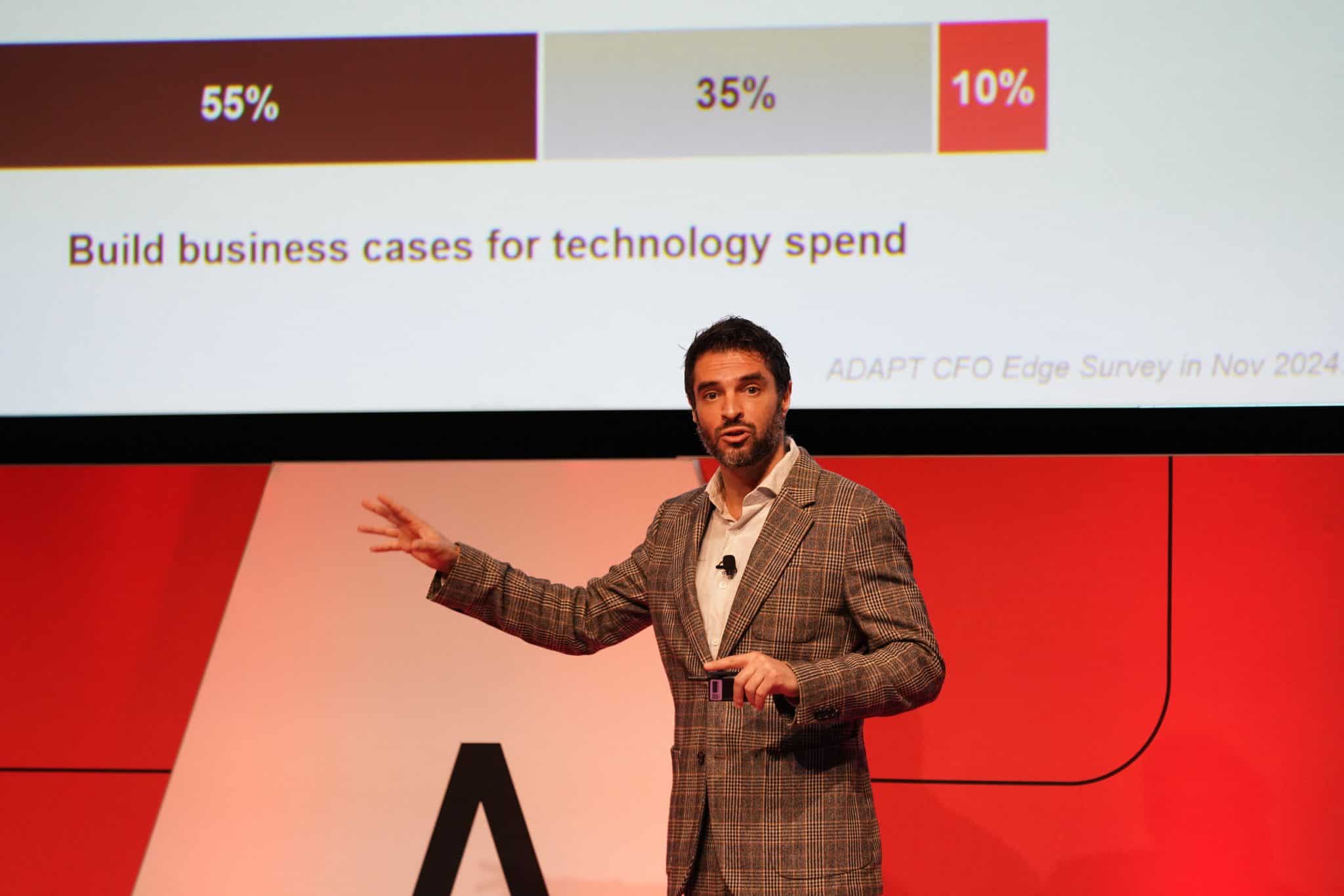Gabby Fredkin, ADAPT’s Head of Analytics and Insights, discusses advancements in predictive analytics, the role of transparency in tech investments, and tailored AI strategies for CFOs in his CFO Edge presentation.
He discusses the challenges CFOs face, such as limited resources for technology initiatives, inflationary pressures, and the need for clarity in spending.
Gabby emphasises that greater transparency in technology expenses enables more accurate business cases, helping CFOs align investments with organisational goals and evaluate initiatives more effectively by presenting clear information on costs, ongoing expenditures, and transition implications.
Gabby demonstrates the relationship between transparency and the success of business use cases in technology. Organisations with greater clarity can better optimise resources, reduce redundant investments, and improve data automation.
He encourages CFOs to evaluate the “technology impact to value” ratio, asking them to identify the primary value they expect from tech leaders—whether it’s risk mitigation, cost reduction, or growth.
Additionally, Gabby stresses the value of chargeback models for understanding departmental resource allocation, as well as the importance of clear data integration and simplification processes for cost-effective technology management.
Gabby introduces an “AI jungle” matrix for CFOs, categorising organisations into four archetypes—Koala, Greyhound, Turtle, and Tiger—based on their IT modernisation and data maturity levels.
Each archetype represents distinct AI priorities: Koalas focus on basic cost optimisation, Greyhounds on workflow efficiency, Turtles on compliance and customer-centric initiatives, and Tigers on leveraging advanced AI for growth.
By identifying their archetype, CFOs can focus AI investments more strategically, whether through governance improvements, application consolidation, or customer-driven projects.
Gabby underscores that AI is a long-term commitment, urging CFOs to plan for visibility, value, and ongoing costs to integrate AI effectively into their organisations.
Key Takeaways:
- Transparency drives value: Greater transparency in technology spending empowers CFOs to build stronger business cases, optimise resources, and align technology investments with organisational goals.
- Tailored AI strategy: Organisations fall into different archetypes—Koala, Greyhound, Turtle, or Tiger—depending on their data maturity and IT modernisation. CFOs should tailor AI investments to these specific needs, whether focusing on cost optimisation, workflow efficiency, compliance, or growth.
- AI as a long-term investment: AI requires ongoing investment and maintenance as part of its extended life cycle, ensuring sustained value and adaptability. CFOs should approach AI as a product that evolves with organisational needs over time.





























